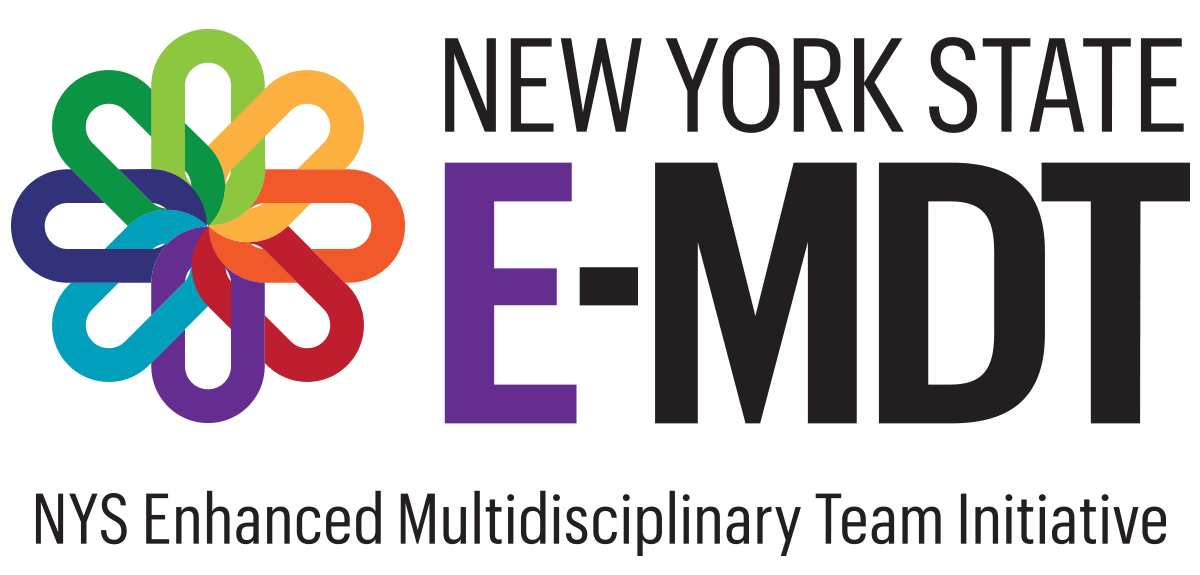Statewide Elder Abuse Interventions and Enhanced Multidisciplinary Team (E-MDT) Initiative: NYSOFA Program Report
September 1, 2017 - September 30, 2022

New York State prioritizes a multidisciplinary response to cases of elder abuse.
Timeline
-
Lifespan of Greater Rochester convened the first comprehensive, statewide Elder Abuse Summit in the nation. Held in Albany, this summit brought together experts from across New York State to develop recommendations to address the growing problem of elder abuse and mistreatment. These experts represented academia, financial institutions, health care, law enforcement, the legal community, local government, non-profit agencies, and state government and would participate in work groups on financial exploitation, intervention models, prosecution and law enforcement, public awareness and education, public health, and self-neglect.
-
Lifespan of Greater Rochester, Weill Medical College of Cornell University, and the New York City Department for the Aging partnered together to conduct a study on the prevalence of elder abuse in New York State. With funding from the New York State Office of Children and Family Services and the William B. Hoyt Memorial Children and Family Trust Fund, this study estimated the prevalence and incidence of various forms of elder abuse in a large, representative, statewide sample of older New Yorkers over 60 years of age through direct interviews from over 4,100 subjects and 325 service organizations who responded to the survey. Findings showed that an overall prevalence rate of 141.2 per 1,000 and an incidence rate of 76 per 1,000 among older adult respondents across the state, as well as an elder abuse incidence rate was nearly 24 times greater than the number of cases referred to social service, law enforcement, or legal authorities who have the capacity as well as the responsibility to assist older adult victims. Additionally, the self-reported study found financial exploitation was the most prevalence form of abuse reported by respondents as having taken place in the year preceding the survey.
-
Major stakeholders reconvened to review and reprioritize the New York State Elder Abuse Action Agenda. Recommendations that were developed out of the 2004 summit, along with the findings of the statewide Elder Abuse Prevalence Study formed the starting point for the next steps in the discussion. Workgroups focused on assessment, data collection, and evaluation, financial exploitation, health, mental health, substance abuse, laws, law enforcement, and prosecution, multidisciplinary teams and cross-system collaboration, and public/professional awareness, education, and training.
-
The New York State Elder Abuse Prevention Interventions (EAPI) grant initiative was launched in New York State in 2012 under a grant from the Administration for Community Living to the New York State Office of the Aging. The project goal was to pilot an intervention that would prevent and address financial exploitation by bringing together entities in each local project site to form coordinated enhanced multidisciplinary teams to provide improved and effective cross-systems collaboration and specialized responses, resulting in restored safety and security to older adults. This model, an adaptation of the multidisciplinary team in the borough of Brooklyn in New York City, was implemented in seven counties in the Finger Lakes Region, coordinated by Lifespan of Greater Rochester, Inc., (Cayuga, Livingston, Monroe, Ontario, Seneca, Wayne, and Yates) and in the borough of Manhattan in New York City, coordinated by the New York City Elder Abuse Center at Weill Cornell Medicine.
-
In January 2016, Lifespan of Greater Rochester and the New York City Elder Abuse Center partnered together to design, pilot, and conduct a survey to assess the adequacy of elder abuse victim prevention and intervention services in New York. Feedback was obtained about the gaps and barriers in elder abuse services across multiple service systems. A total of 484 individuals responded to the survey, representing 60 out of 62 counties and one Native American nation. Service gaps and barriers were identified, and solutions enumerated surrounding a few key findings including the need for elder abuse prevention and intervention services and case finding, reporting to law enforcement, and crime victim compensation. Almost all respondents also indicated a need for improved community collaboration through elder abuse multidisciplinary teams.
Recognizing the effectiveness of the E-MDT model, the state legislature allocated an additional $500,000 to sustain the E-MDTs that were piloted, enhance NYCEAC’s Brooklyn MDT, and expand E-MDTs to an additional 14 counties. -
Building on this success and the recognized need for the E-MDT intervention to be made available statewide, in 2017 the NYS Office for Victim Services and NYS Office for the Aging partnered with each other and with Lifespan of Greater Rochester and NYCEAC at Weill Cornell Medicine to establish and implement the Initiative to support existing E-MDTs, expand E-MDTs statewide, and develop technical assistance and other supports for successful statewide implementation. This marked the first time that two state agencies came together to fund an initiative of this kind. Additionally, NYCEAC received funding from the Department of Aging to expand E-MDTs to all five boroughs.




